Cruise ships are no longer allowed to dock in Venice for several reasons. Environmentally, they cause pollution in the lagoon, and the waves they generate are eroding the underwater structure of the city. They are also dangerously large.
Venetian citizens opposed to cruise ships docking at the city port won their case in 2019, when a large 100,000-ton 13-deck cruise ship experienced engine failure while docking in Venice. Two tugboats were assisting the ship, but lacked sufficient power to control it. The cruise ship slid against a sightseeing boat just as passengers were disembarking over a short gangplank. People were caught on the walkway as the smaller vessel was dislodged from the pier, and five people were injured falling or trying to run away.
Cruise ships now have a choice of two nearby ports at which they may dock for passengers to visit Venice. One of those ports is located in an industrial area about 30 minutes from Venice by water taxi; the other is located at least 1.5 hours from Venice by water taxi, but it’s in the charming city of Chioggia, where our ship docked. The water taxi ride could be completed in less time, but there is a 12 mph speed limit in the lagoon to prevent erosion from strong wakes and to reduce noise pollution for residents along the lagoon. (For the record, I totally support Venice’s policy changes.)
Venice is in the upper center and Chioggia is in the bottom center of the map below. The larger of the two islands just north of Venice is Murano, the home of Venetian glassmaking and the destination of an upcoming shore excursion for Ted and me. There’s a narrow horizontal island on the south side of Venice with a tiny island at its eastern tip. That tiny island is San Giorgio Maggione Island, another upcoming excursion destination for us.
The water taxi took us for a scenic cruise from Chioggia to Venice through the Venetian Lagoon on the inside of those long, narrow islands shown in the center of the map. The gray line along the edge and running the length of the long islands might be a road, but we saw walkers and bicyclists—not cars—on it.
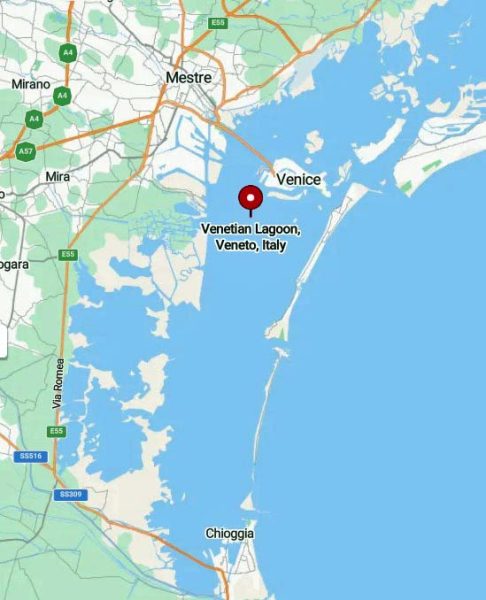
All the way from Chioggia to Venice, the long islands were dotted with colorful villages. In some places, we could see across the islands to the water on the other side.
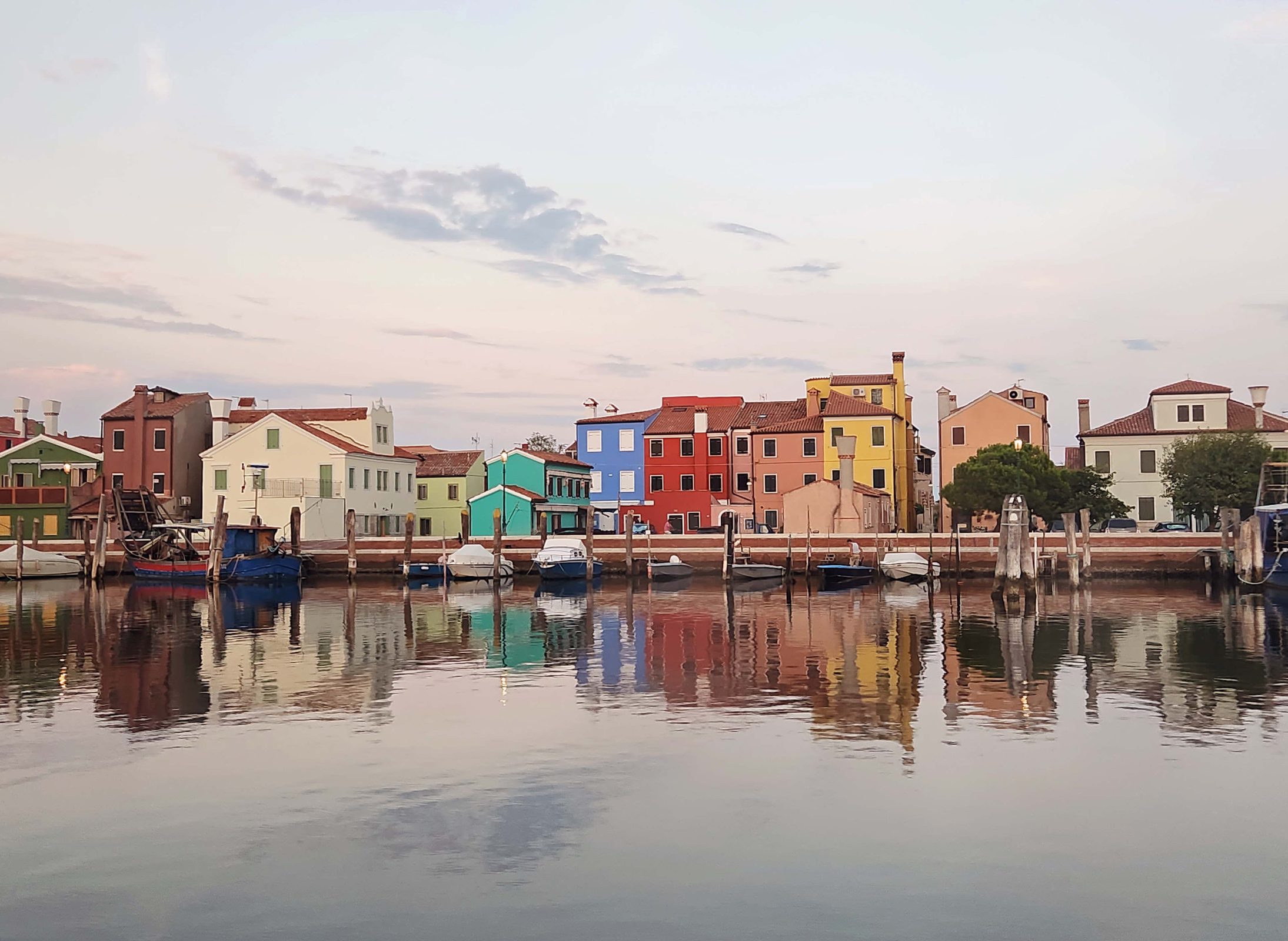
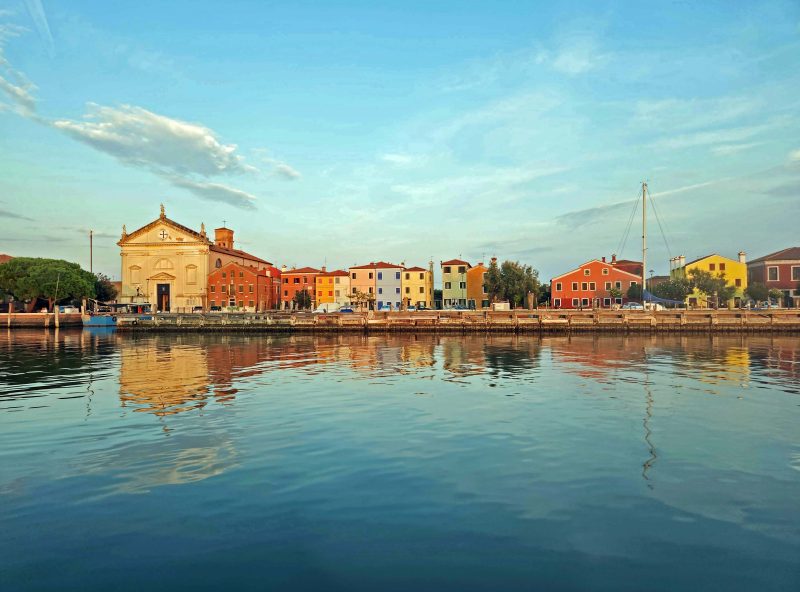
The colorful villages were on our right and there were fishing shacks and wooden triad channel markers on our left as we traveled to Venice. Each wooden triad has a numerical location marker nailed to it. Before the convenience of GPS, boaters in need of assistance or rescue could radio a rescue team and give them the number posted on the nearest triad to direct the rescuers. The triad in the second photo below is marked number 122.
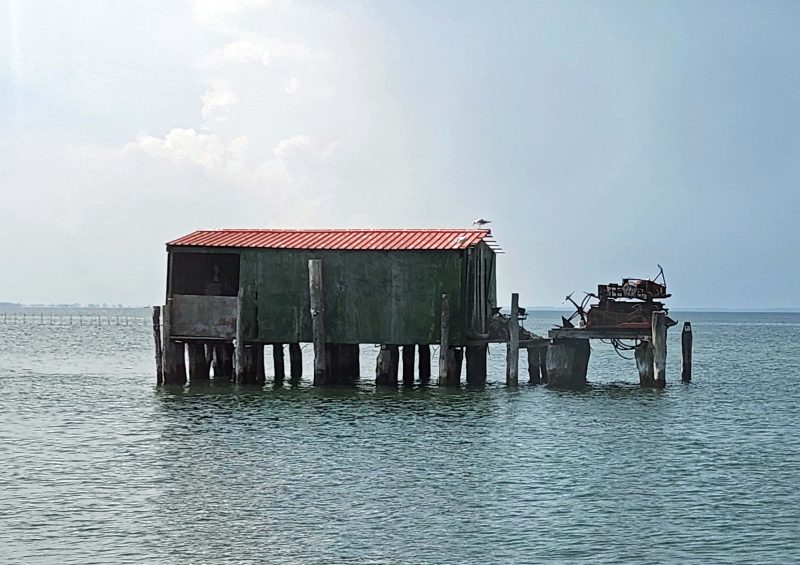

Ted’s and my first sight of Venice included (for my meteorologist husband) an anvil cloud. We were lucky, though—the thunderstorms stayed north of Venice, and we had a sunny day.

The white, red-roofed building on the left is Venice’s old Customs Building and includes a museum inside. The large dome is the Santa Maria della Salute Church, commonly known as the Salute.
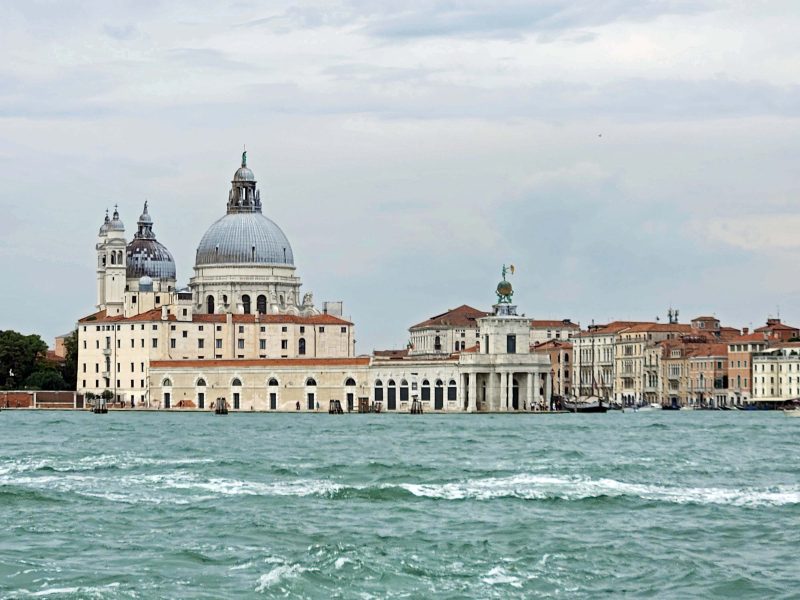
The Bridge of Sighs is the arch in the left center of the picture below. The red building on the left used to be the courthouse where criminals were tried and sentenced. The building on the right is wrapped and under construction now, but was formerly the prison. Convicted and sentenced prisoners were taken directly from the courthouse to the prison, and crossing the Bridge of Sighs was their last taste of freedom.

St. Mark’s Square (the Piazza San Marco) is the most renowned piazza in Venice. The bell tower is an iconic landmark of Venice. All that white on the right side of the photo is part of the front of St. Mark’s Basilica. You can tell by the crowd that the piazza is a popular place.
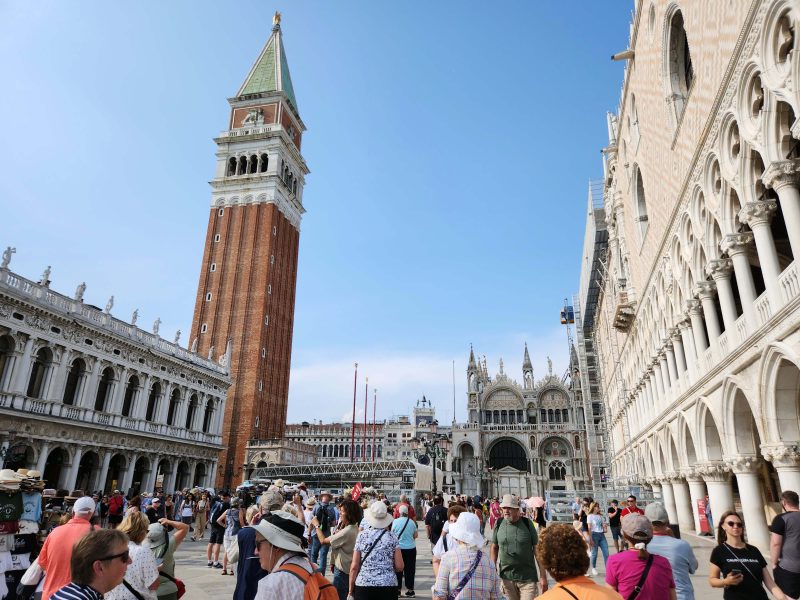
This is the main entrance to the basilica. It faces the bell tower and is in the invisible foreground of the photo above. The basilica is so large, the entire front doesn’t fit in my camera lens.
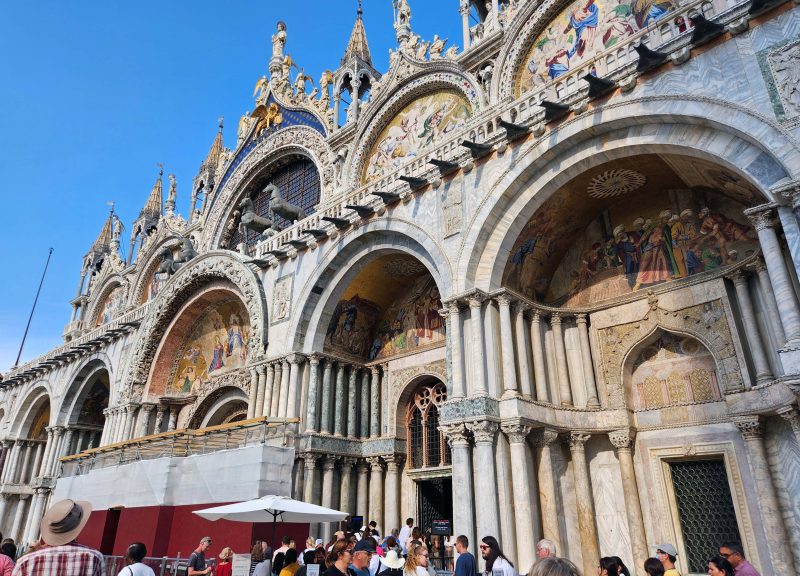
This photo shows the Clock Tower in St. Mark’s Square.
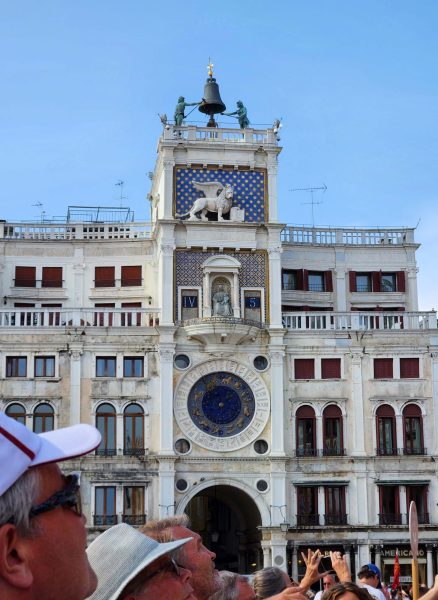
Venice is an archipelago of 118 islands, separated by canals and linked by over 400 bridges. If you cross a bridge, you’re walking to a different island. Because Venice is set in a marshy swamp (who picked this location???), it is a floating city, built on huge wooden piles driven deep into the ground, down to where there is hard clay strong enough to support the buildings. Still, you can’t fight Mother Nature, so Venice is sinking at a rate of about 2mm per year, and research shows it is also tilting slightly.
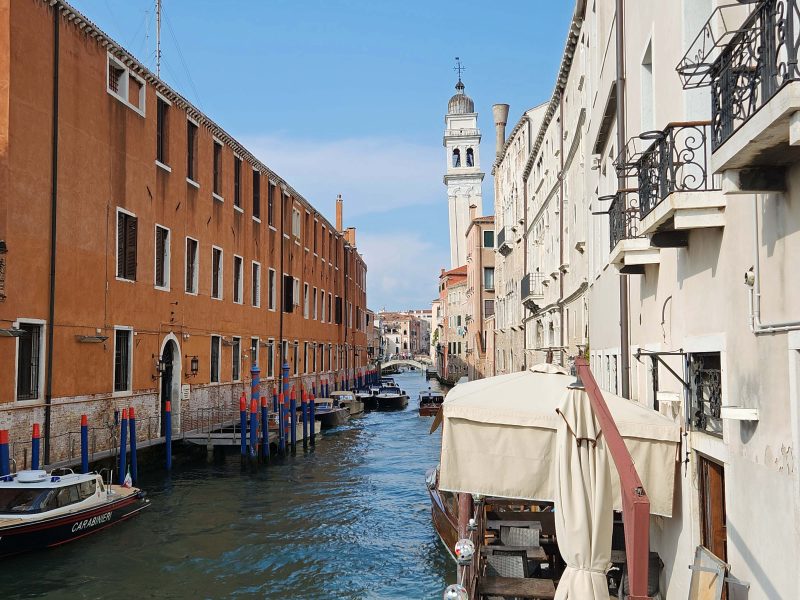
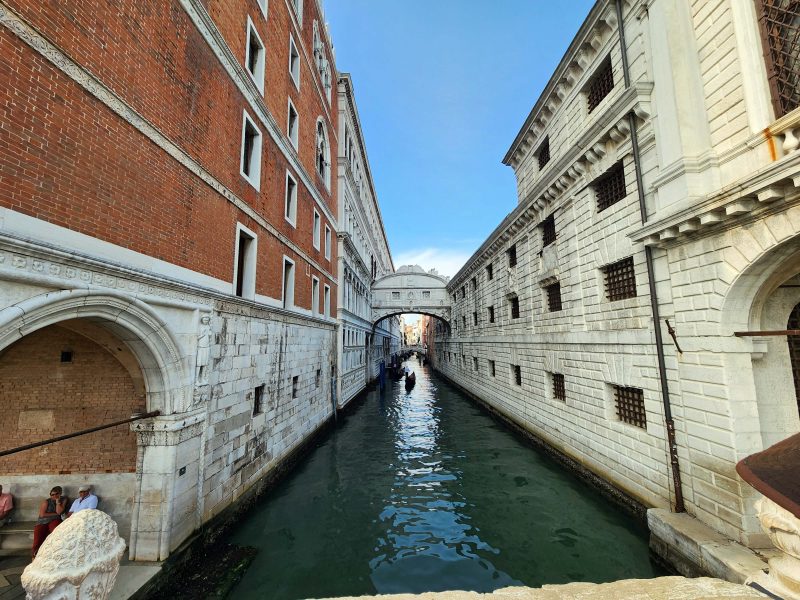
The gondolas of Venice with singing gondoliers sound so-o-o romantic until . . . you see traffic jams of gondolas without the slightest note of song in the air. A 30-minute gondola ride costs about $90 per person during the day and about $130 per person at night. They looked as romantic as a ride at Six Flags, but apparently, the spirit of riding in a gondola in Venice must be taken into account.
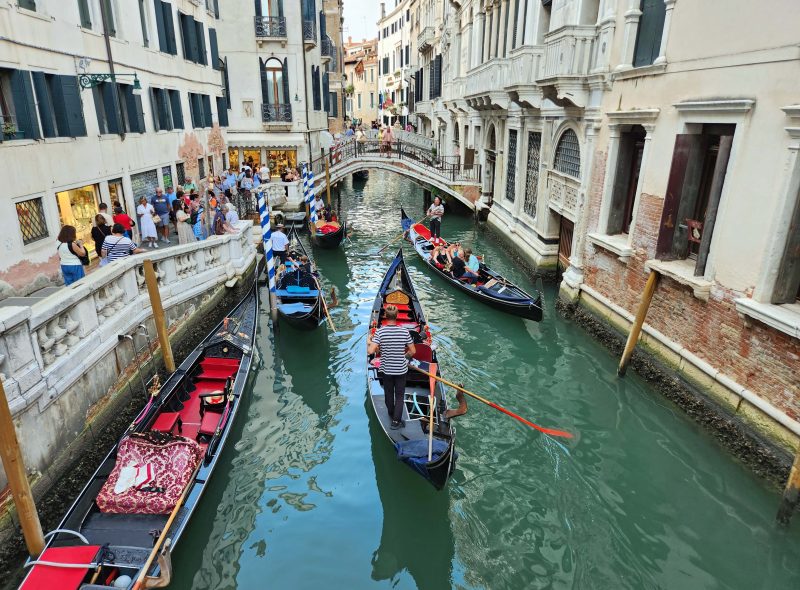
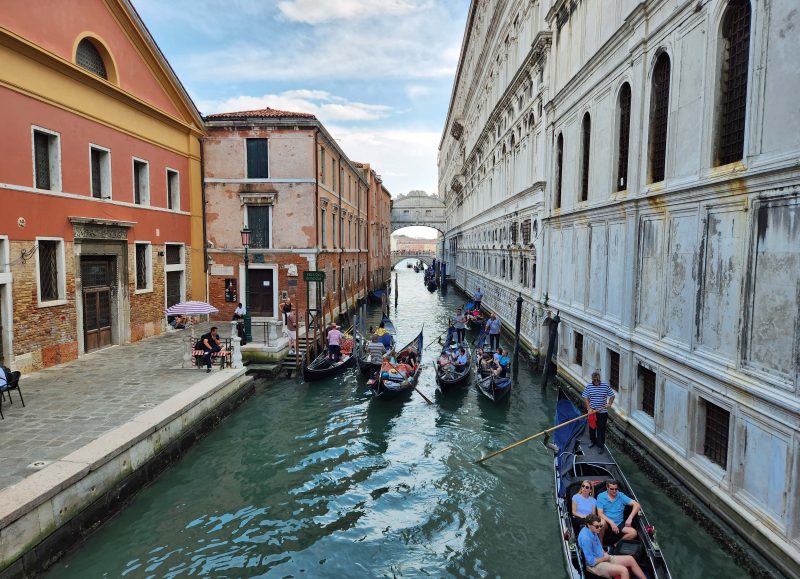
The area of Venice is surprisingly small. Nearly all of the city is within a 20-minute walk from St. Mark’s Square, where we started. Ted and I were surprised to find ourselves at the other end of the city so quickly. Luckily, there were a lot of interesting streets, so we just walked wherever it looked interesting, knowing that it would be easy to find our way back to the water taxi dock.

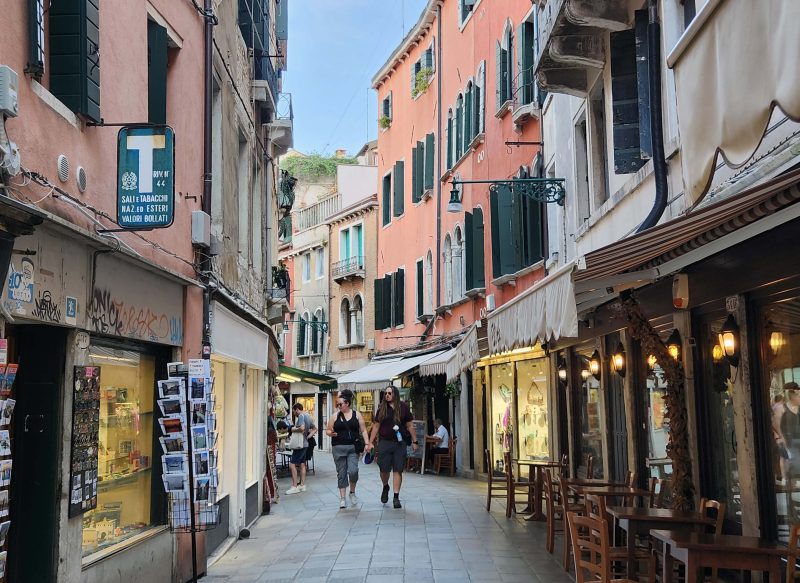
Today, we learned about gelato. If you’ve ever seen trays of gelato temptingly heaped above the upper edge of the tray, so that just thinking about having some of that tempting gelato makes you drool, stop drooling. That’s “tourist gelato” according to Italians. “Real” gelato, for those with discriminating taste, is always low in the tray, requiring you to lean over to see it and to pick your flavor. During our stroll around the city, Ted and I stopped at a sidewalk café for a cool dish of gelato. I don’t know if the waitress brought us “real” gelato or “tourist” gelato, but it tasted good on a warm afternoon in Venice.

Ted and I are not the people who make vendors rich. Although we’ve bought things in some of the places we’ve visited, it’s not our mission to purchase a souvenir from every place we visit just to prove we were there. Venice turned out to be one of the places we bought something.
Almost as soon as we arrived in Venice, we saw a sidewalk artist’s display and both of us said, “I like that picture.” It isn’t large, so we knew it would fit in our carry-on size suitcase, but we didn’t account for the protective cardboard the vendor slipped it into. Thanks to security checks, we don’t travel with scissors, but the Guest Services folks on our ship had scissors and a box cutter, and they cut the sturdy cardboard down to our suitcase size. Now the picture is hanging in our dining room.
